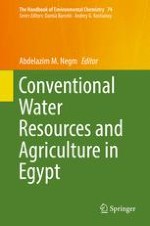2019 | OriginalPaper | Chapter
Investigating the Water Quality of the Water Resources Bank of Egypt: Lake Nasser
Authors : Mohamed E. El-Mahdy, Mohamed S. Abbas, Hassan M. Sobhy
Published in: Conventional Water Resources and Agriculture in Egypt
Publisher: Springer International Publishing
Activate our intelligent search to find suitable subject content or patents.
Select sections of text to find matching patents with Artificial Intelligence. powered by
Select sections of text to find additional relevant content using AI-assisted search. powered by
